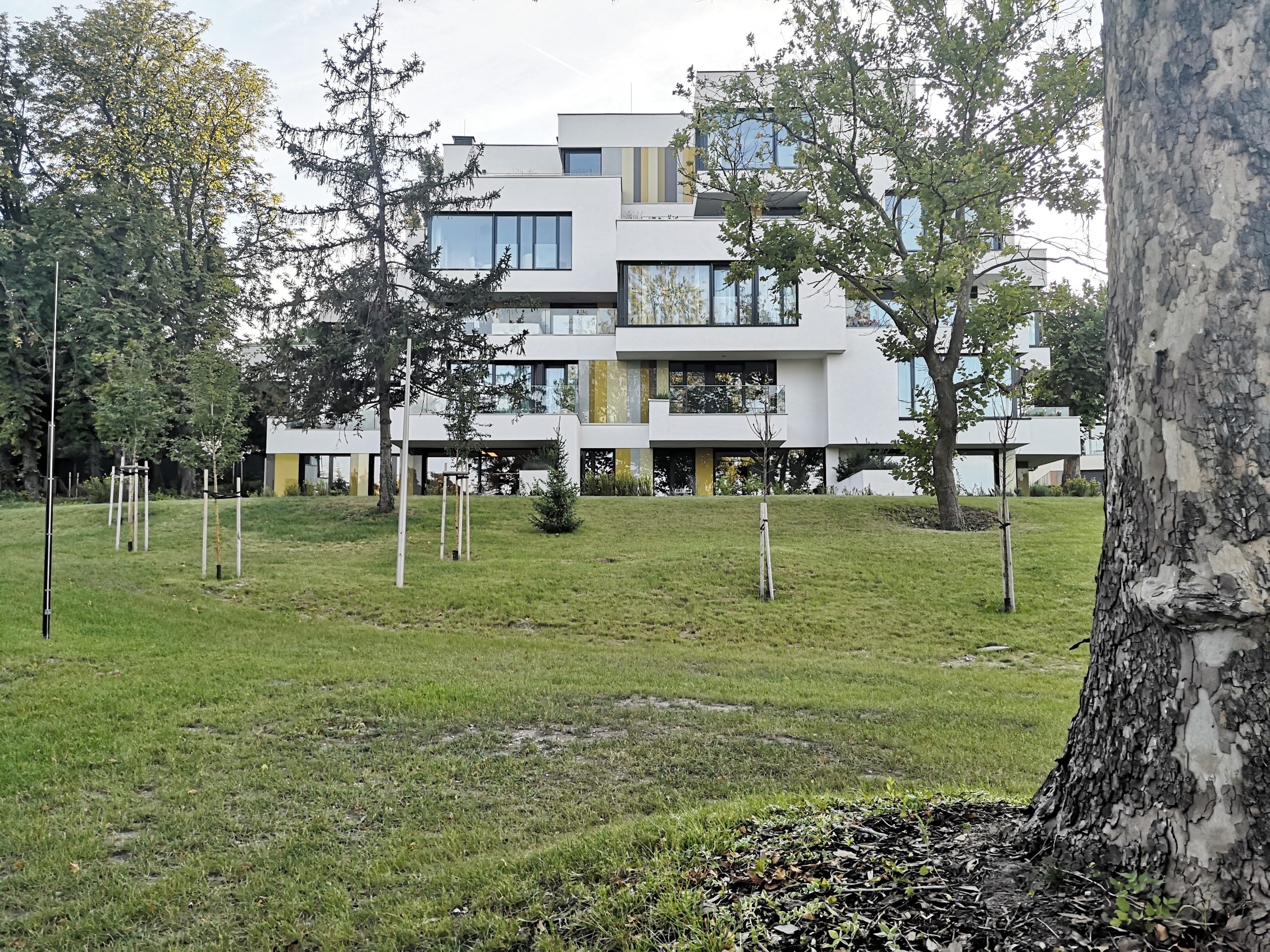The plot of land for the project is located in the 12th district of Budapest, in a free-standing development zone, which is changing from a dense urban landscape to a moderate one, on the hillside with a good panoramic view.
The plot was formerly home to more intensively developed office buildings, alien to the surrounding houses, for the installation of which the former terrain slope was levelled by deep cuts.
During the design phase, we reconstructed the former terrain geometry based on archival drawings. The new buildings and the underground parking have been positioned accordingly, following the topography of the terrain, retaining the large trees on the plot and the adjacent development lines in the lower part of the plot.
Own mini-gardens and natural features:
We envisioned buildings where each floor apartment would have not only terraces but also mini gardens with green roofs and planted plants, creating a sense of a small house with a garden.
For these upstairs gardens, the form of each building is deliberately natural feature – providing an abstract landscape-like appearance, with a dominant façade plaster typical of the buildings in the area, and complementary stained-glass inserts that, in addition to being interconnected, serve as a sense of enhancement through their reflection.
The white plastered material of the façades continues in the ground floor private gardens, stairs to entrances, other ground dividers.
Due to the terrain slope and the positioning, the six planned buildings are not exactly the same, but they contain repeating façade elements.
The façade openings and glass inserts are set back on the inner wall plane, not only for optical reasons, but also to provide space with the frame covering for other shielding, electrical and ventilation installations.
The complex of six buildings is served by a single underground car park for each of three-three building groups, with independent street entrances, designed entirely primarily as a building and only to the extent necessary under additional green space.
The buildings are constructed of monolithic reinforced concrete, or precast reinforced concrete for the planting beds, with brick filler walls and additional thermal insulation. The glass cladding is made in a ventilated manner, with concealed point-fixing, bonded construction, with a safety mounting rail at the bottom.
The façade insulation and false ceiling structures ensure the concealment of all electrical and external drainage fittings.
The heating needs of the buildings are provided by surface cooling and heating, fed by a geothermal heat pump. The ventilation of the individual apartments is provided by individual heat-exchange vents integrated into the side frame coverings.

